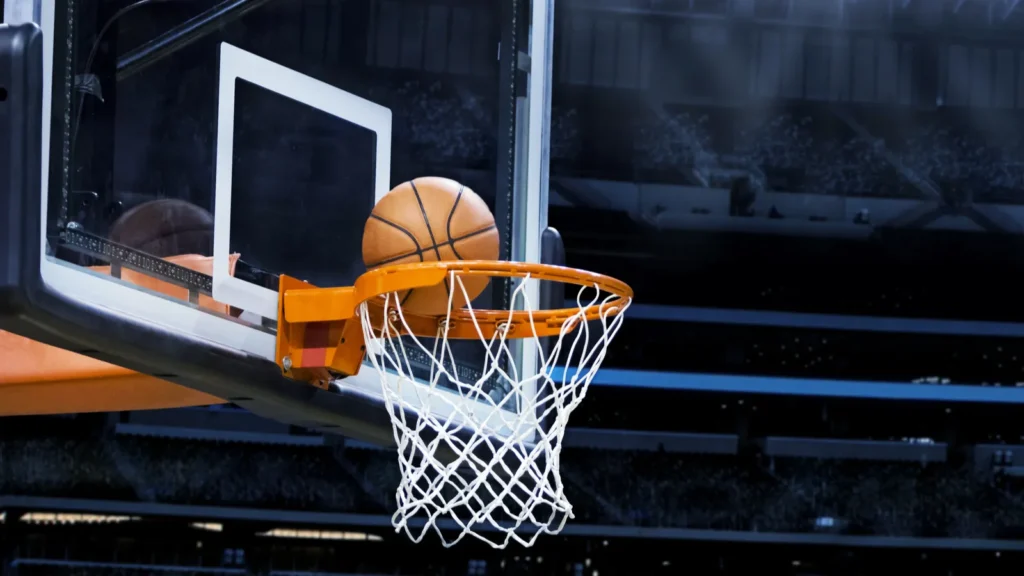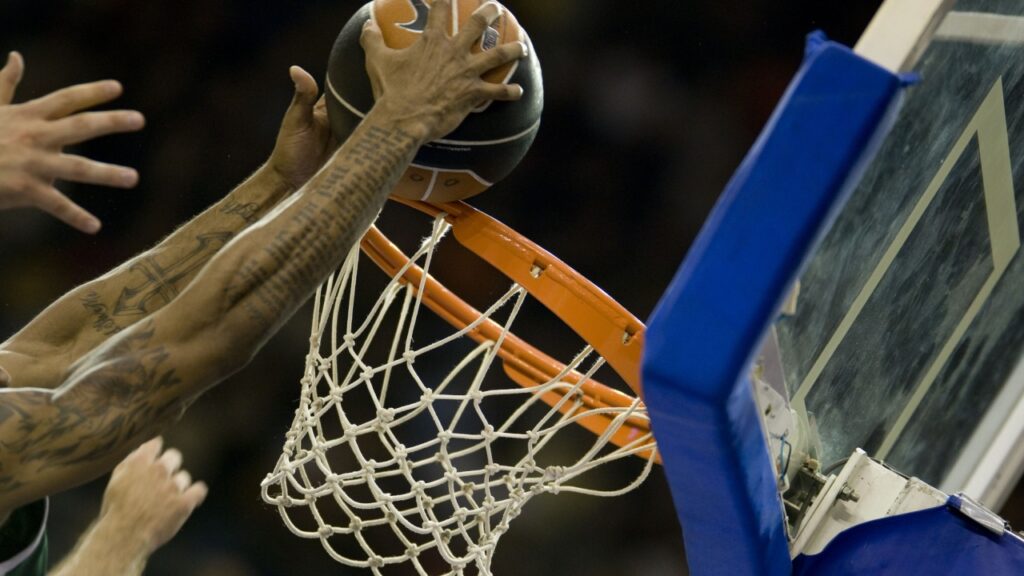
Over the past few decades, the NBA has changed dramatically.
One of the biggest shifts has been the rise of “three‑and‑D” players, athletes who can make three-point shots and play strong defense. This style wasn’t always common, but today it is essential to how teams build their rosters, run offense, and defend effectively.
In the modern game, teams without reliable 3-and-D players often struggle to compete at the highest level. In this article, we will explore how three-point shooting grew in the NBA, how the 3-and-D role developed, and why it has become one of the most important trends in basketball today.
The Origins and Rise of the Three‑Point Shot

Early Days of the Three-Point Shot
The three-point line was introduced to the NBA in the 1979–80 season. At first, it was widely viewed as a gimmick. Many coaches believed it was only useful in desperate situations, while players rarely practiced it seriously.
Teams relied mainly on mid-range jumpers and scoring inside because those shots were considered safer and more reliable. In the first season, the league average for three-point attempts was less than three per game, showing just how cautious teams were about this new shot.
The First Wave of Shooters
By the 1980s and early 1990s, certain players began using the three-pointer more consistently. Reggie Miller became one of the most famous shooters, known for hitting clutch threes that could change a game instantly.
Danny Ainge and Michael Adams were also early specialists who took advantage of the shot’s higher value. Coaches and teams slowly realized that a made three-pointer is worth 50% more than a standard two-point shot, so players who could hit threes efficiently were extremely valuable.
Analytics and Strategic Growth
As basketball analytics developed, teams discovered that certain three-point shots were far more efficient than mid-range attempts. Teams began to track shot selection, success rates, and player efficiency, which encouraged a shift toward creating more open three-point opportunities.
By the mid-2000s, this shift accelerated, and in the 2010s, the NBA entered a full three-point revolution. The average number of three-point attempts per game grew rapidly, and teams started designing offenses to emphasize spacing, ball movement, and shooting efficiency.
The Birth and Growth of “Three‑and‑D” Players
What “3‑and‑D” Means
“Three‑and‑D” players are specialists who excel in two areas: shooting three-point shots and playing tough, versatile defense. They are not always the top scorers on a team, but they are extremely valuable because they stretch the floor and can guard multiple positions. Their presence allows teams to run modern offenses and defensive schemes more effectively.

Early Examples and Origins
The 3-and-D role has roots in earlier decades. Michael Cooper is considered one of the first true 3-and-D players, known for his defensive skills and ability to hit open threes. Later, Bruce Bowen became a prototypical 3-and-D wing, famous for his corner three-point shooting and elite perimeter defense.
In the 2000s and 2010s, players like Shane Battier and Kawhi Leonard showcased the modern 3-and-D skill set. Battier was a small-ball specialist who could guard multiple positions and knock down threes, while Leonard combined elite defense with efficient outside shooting, making him one of the most complete wings in the league.
Why 3‑and‑D Became So Important
Roster Building
Teams quickly realized that 3-and-D players were essential for building a balanced roster. They may not dominate the scoring charts, but they create spacing for star players and allow coaches to design lineups that can defend multiple positions effectively.
Positionless Basketball
The rise of three-point shooting and versatile defense led to a shift toward positionless basketball. For example, a forward might guard a small guard on one possession, then switch onto a taller player on the next. This flexibility allows teams to adapt to different offensive threats without changing personnel.

Spacing and Strategy
3-and-D players force opposing defenses to make tough choices. Should they guard tightly and risk leaving other shooters open, or give space and allow a three-point attempt? This strategic impact makes them highly valuable even if they don’t handle the ball much themselves.
Strategic Impact: Why Three‑and‑D Is Critical in Today’s NBA
Offense: More Space, More Options
The presence of three-point shooters changes how offenses operate. With strong shooters on the wing, teams can drive to the basket and kick out to open players for three-point attempts.
Stretch bigs, such as Kristaps Porziņģis and Nikola Jokić, pull defenders out of the paint, creating more room for drives, cuts, and post plays. This spacing makes the offense more dynamic and difficult to defend.
Defense: Adapting to the Threat
As three-point shooting became more important, defensive strategies had to evolve. Stopping the three became a major priority, but defending shooters is tricky.
If defenders go too far out, the paint is left open; if they stay close, they risk giving up the shot. 3-and-D players provide versatility, guarding top shooters, switching onto different positions, and helping teams execute complex defensive schemes.
Shaping Team Identities
Many modern teams now build their identity around three-point shooting and defensive versatility. The Golden State Warriors are a prime example, using a combination of long-range shooters and smart defenders to dominate.
Front offices rely on analytics to identify the most efficient 3-and-D players. These players often don’t need to dominate the ball; their value comes from making open threes and defending effectively.
Frequently Asked Questions (FAQ)
Q: When did the term “3‑and‑D” first appear?
A: The term became more common in the 2010s. It describes players who can shoot threes consistently and play elite defense, such as Draymond Green or Kawhi Leonard.
Q: Why didn’t early NBA teams use many three-pointers?
A: Early teams didn’t trust the shot, and analytics were not advanced. Coaches stuck to mid-range and inside scoring, unaware of the long-term value of the three-pointer.
Q: Who are some famous 3‑and‑D players?
A: Notable examples include Michael Cooper, Bruce Bowen, Shane Battier, Kawhi Leonard, Robert Covington, and Mikal Bridges. These players are valued for their ability to defend and make shots from the perimeter.
Q: How does analytics support three-point shooting?
A: Analytics show that open three-point shots often produce more points per possession than mid-range shots. Teams use this information to design plays that maximize three-point opportunities and select players who can make them consistently.
Q: Is three-point shooting always good for a team?
A: No. Low-percentage threes or poor defensive support can hurt a team. 3-and-D players help balance offense and defense, ensuring that spacing doesn’t come at the cost of vulnerability.
Q: How has three-and-D changed how big men play?
A: Many big men now develop reliable three-point shots, becoming stretch bigs. This changes how they are used in the offense and how defenses must guard them, opening up space for drives and cuts.
Conclusion
- Three-point shooting has transformed the NBA from a rare novelty into a core strategy.
- 3-and-D players who can shoot and defend are now central to building flexible and effective teams.
- These players improve spacing, enhance defensive versatility, and influence offensive and defensive strategies.
- Teams that master three-point shooting and defense are more likely to remain competitive in the modern NBA.
- Understanding the rise of 3-and-D is essential for fans, players, and coaches to grasp how today’s game operates.
Read More:
- How G-League Development Shapes NBA Futures
- Offseason Workouts That Keep NBA Players in the Game Longer
- The Greatest Duos in NBA History
This article was made with AI assistance and human editing.



